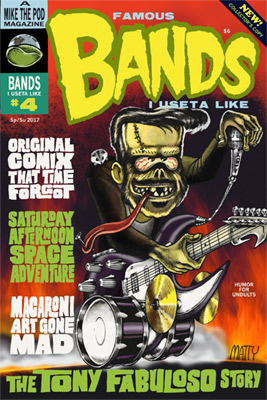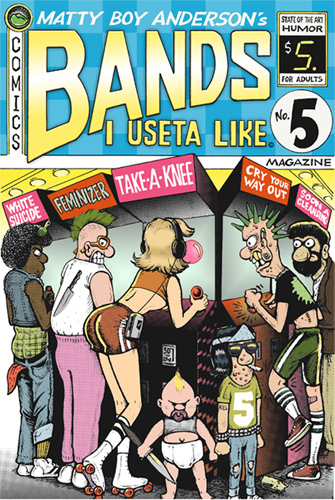Forrestal (?-1936) was a competitor of the archaeologist Henry “Indiana” Jones, Jr. (1899- ). He was good. He was very, very good.
On June 12, 1981, Raiders of the Lost Ark was released in theaters. It was rated “PG”, which stood for “Parental Guidance”. The basic idea behind this MPAA rating was that parents should be ready to provide guidance for any offspring that might be negatively affected by the film. When things get too “scary”, it’s time for a parent or guardian to step in and say “it’s only a movie.” Which it is. It can in no way physically or mentally hurt you, and anyone who tells you differently is an escaped lunatic.
That’s the way it was. Parents didn’t raise picket signs when a movie frightened their kids. They told them not to be silly. IT’S ONLY A MOVIE. What do you mean, you’re “gonna have nightmares”? You’re being ridiculous. You know what? I’ll think twice before taking you to the movies next time.
In 1936, Indiana Jones was in Peru, hunting a golden fertility idol. He begins filling a bag with sand, and tells his porter Sepito that this is where Forrestal “cashed in”. All we know of Forrestal is Indy’s incredibly vague description, but we get the hint that he’s been a thorn in Dr. Jones’ side for some time. His name is even a pun: fore stall.
Carefully making their way through the trap-filled temple, Indy and Sepito encounter a passageway lit by a sunbeam. One of the greatest things about Indiana Jones is the inherently dad-like way he protects people. “Stop,” Indy barks. “Stay out of the light.”
This is a classic Indy euphemism, like “Don’t come up here” from Temple of Doom. When Harrison Ford gets like this, you know things are extremely bad. The next level is WEE ARE GOING TO DIE!
The foley artists and sound department earn their paychecks with the following sequence, as Indy waves his hand in the light, triggering a wall of spikes that would have skewered him like a kebab. Still resting in the trap is the upright corpse of a man, in the early stages of decomposition. The weight of the head causes it to droop forward slowly, alive with the grotesque sounds of rotting tissue and ichor, until its horrific visage is face-to-face with Indy. He looks into this foul spectacle, its eyes and mouth wide in the throes of agonizing death, and smirks in recognition.
“Forrestal,” he mutters.
Look at the above screenshot. Of course Indy recognized him. You could render a fine police sketch based on that corpse. Whomever built that prop clearly based it on a real guy; maybe the propmaster himself (I think it was a guy). It’s one of the most visceral and successful technical effects in film history, and it’s six minutes into a PG-rated movie. Most viewers are screaming in unison with Alfred Molina at this point.
I saw Raiders of the Lost Ark under the parental guidance of my dad in 1981. More than once I caught him laughing at me for being scared. This is what made it fun. I was intrigued by his resilience to the squirmy stuff. It was a nice kind of father-son thing that existed for a brief few years in the early 1980s. Remember the jump-scare in the fountain at the end of Gremlins (1984)? That was the coda. Too many mommies had to deal with too many peed pants, and thus we “graduated” to PG-13. The fun was over.
The Indiana Jones movies are a terrific barometer of parental interference. We start off with a wondrous buffet of exploding heads, popping eyeballs and hearts being ripped from chests. By the third installment, we’re down to one gross scene, where the Nazi sympathizer ages 100 years in a minute. By the fourth, ratings guidelines and pressure groups have become so oppressive, you’re left with Cate Blanchett poofing into CGI embers as punishment for her misdeeds.
The incredibly brief appearance of Forrestal would never happen today. A corpse prop takes time, money and skill to fabricate; none of this would be approved in 2016, based on a handful of script lines. Either your studio has to have a fabrication department, which it will not, or you’ll have to farm it out to a contractor, and they went out of business decades ago, thanks to the cheapness of CGI. If by some miracle you got this corpse prop built, putting it in your movie will bump your rating from PG-13 to R, and there go your profits. And on top of that loss, critics and audiences use the appearance of the corpse as a talking point about how movies have gone too far. The scene is cut for reissue. The ninnies win again.
The uninformed lay the blame at the feet of CGI, and they’re not completely wrong, but they refuse to see the longview. Movie studios always go cheap. That is their nature. If a movie doesn’t triple its budget in revenues, they don’t care. The stakes are way too high. They don’t care if CGI looks fake to you. It costs about a million dollars less than a fabrication department, and takes up a fraction of the space. If you go back far enough in movies, you’ll see cardboard sets, and flying saucers held aloft with baling wire. That was the CGI of the day. Spielberg and Lucas were the ones who brought realism to space opera and legend, which is why I find it ironic that some audiences and directors think they know better.
The only way you can tell a movie is PG nowadays (without checking the rating box) is by the number of curse words. You can even say “fuck” in a PG-13 film; it blew my mind when I heard it in the third and fourth Transformers movies. Somewhere, on some forum, I might’ve been so incredulous at the idea of “fuck” in a Hasbro movie, I proposed to eat something inedible if it ever happened. I hope that post is never found.
The difference is this. Parents can tell their kids not to say “fuck”, even though they heard it in a movie. Parents have to draw on their internal resources to deal with a kid who’s crying because a movie scared them. Many parents suck at this, so they take the easy route and blame the movie. Since the movie is a product, sold by a company, the producers note this and change things accordingly.
And here we are. You should be able to see the diminishing returns by now. You can pack a contemporary movie to the rafters with semen, diarrhea, shit, fuck, and wee-wee, but a well-crafted corpse prop or an exploding head is fetish territory. Outside of Eli Roth movies, you’ll only see them in Dredd, which was sadly unappreciated. That anarchic, funhouse aspect of the movies; the bean counters systematically proved there’s no money in it. That’s why you’ll never, ever see “splatter effects” in an Indiana Jones film again, especially if diaper-factory Disney is behind it. They exist only to mollify, exploit and reap fortune. Unlike Indy, they abide no competitors.
As Forrestal proved, that’s not good for one’s health.

The name of Alfred Molina’s character is a subject of debate. Note that he’s called “Satipo” here, but Harrison Ford clearly says “Adios, Sepito” in Raiders. Some argue he says “adios stupido”. He does not. Also: corpse on a bubble-gum card. See also: why 1981 was great.












You must be logged in to post a comment.